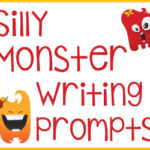
Teaching your children a foreign language can be both fun and challenging. Perhaps one of the more challenging parts is helping your children learn the vocabulary. I know that practicing those foreign words might seem like a mundane task, but it’s vital to learning a foreign tongue.
After all, how can you possibly order dinner in a restaurant on your next vacation to Cancun if you don’t know how to say the food in Spanish?
Fortunately, there are some activities and memory tricks you can use to make learning that foreign language vocabulary easier including using labels, singing songs, and using mnemonics. Here are the specifics to help you out.
Foreign Language Vocabulary Tips and Tricks
Labels
Putting labels on items around your house is one way to help your whole family learn vocabulary.
Materials:
- 3 x 5 index cards
- Markers
- Masking tape, poster tack, or some other adhesive device that won’t damage your walls
Write one vocabulary word on each card with a marker. It’s usually a good idea to include the foreign word for “the” as well. This is because many foreign languages have more than one word for “the”. By including this word, you help your child learn to connect the vocabulary word with the proper article. When the labels are finished, let your kids hang them in the right place.
How long should you leave the labels up? As long as it takes for your children (and everyone else in your family) to learn the words well. Although, if you are using a program that has tests or quizzes, you might have to take them down in your homeschool room so that your kids don’t see the answers.
Relate Vocabulary to English Words
Sometimes the words in a foreign language can be related to English words. You may have already noticed that some words appear and sound similar to their English counterpart. In Spanish, for example, the word for ‘tomato’ is ‘tomate.’
On the other hand, some words appear to be very different from English. Usually, it is possible to come up with some kind of correlations between the two words which will aid in memorization. Let me share some examples with you to demonstrate my point.
The Spanish word for ‘bear’ is ‘oso.’ It sounds like “Oh so.” You can help your children learn this word by telling them to think of a bear as being “oh so big.” Hold your hands wide when you do this to make it a little more dramatic. This will help it to stick in their minds. If you have a kinesthetic learner, you might want to have him imitate the motions to reinforce learning.
Here’s another example of how to associate words and meanings. ‘Blanco’, is the Spanish word for ‘white.’ It looks like the English word ‘blank’ doesn’t it? So you could have your children picture a blank, white piece of paper when they say the word ‘blanco.’
See how this works?
Pretty much any connections that you can make between a foreign language and your children’s native language will make learning new words much easier for them.
Associate a Word With a Funny Image
Something that is funny sticks in our minds more than something that is, well, boring. That means that humor can make memorizing easier. Now, I know that you may or may not be a comedian. That’s okay if you aren’t, because sometimes your own children can come up with funny associations for words. What you want to do is get them to tie the foreign word to a humorous image in their minds.
Here are some examples to show how it’s done.
The Spanish word for ‘bed’ is ‘cama’ which sounds like ‘comma.’ Your children could imagine a giant comma asleep in a bed. The comma could be snoring so loudly that it causes the other punctuation marks in the room to stay awake or it might make the whole house shudder.
Here’s another example:
‘Rosado,’ pronounced ‘rose-AH-doe’ is Spanish for pink. Your children could envision giant, pink roses wearing pink dresses and suits dancing in a bright, pink ballroom. I know that the word ‘rose’ doesn’t include all of the sounds and syllables in the word ‘rosado,’ but it doesn’t always have to. Sometimes just the first sound is enough to trigger a memory.
When you or your children come up with an image for a word, remember one thing: the funnier the better. The more humorous something is the more likely it will stand out in their minds.
Sing Songs
Ever notice how little jingles stick in our minds? Songs are a very helpful tool for learning, especially for auditory learners. Fortunately, there are quite a few CDs and MP3s in foreign languages on the market. Recordings which include both the English and foreign language version of the song are the most helpful for beginners, but you can also use recordings that are strictly in the foreign language if they are simple and have a translation.
Did you find some useful tips? I hope you did and I hope you share this post with others who are teaching their children a foreign language.








